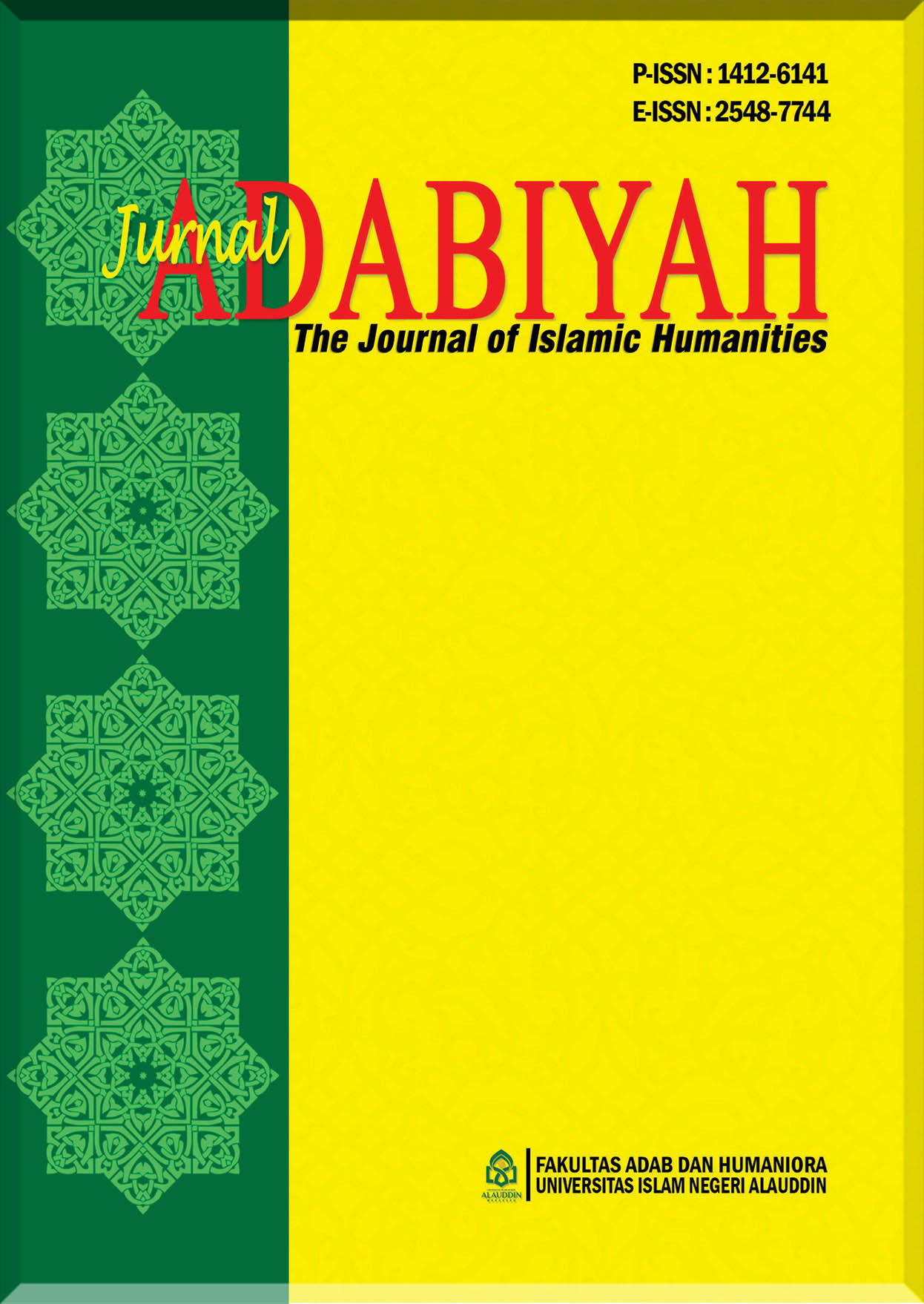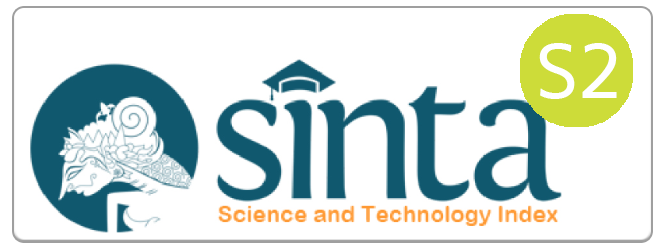Phallocentrism of Pemmali in the Daily Conversation of People in Manorang Salo, Marioriawa Soppeng
DOI:
https://doi.org/10.24252/jad.v25i2a2Keywords:
Pemmali, Phallocentrism, Bugis Culture, Symbolic Order, Luce Irigaray, Gendered Language, SiriAbstract
This study explores the phallocentric dimensions of pemmali—a traditional system of prohibitions and taboos—in the everyday conversations of the Bugis community in Manorang Salo, Marioriawa Subdistrict, Soppeng Regency. Utilizing a qualitative approach and deconstructive analysis grounded in Luce Irigaray’s concept of the symbolic order, the research examines how pemmali functions not only as a cultural moral code but also as a discursive mechanism that reinforces patriarchal norms. Data were collected through in-depth interviews and participant observation, and analyzed using a phallocentric deconstructive framework. The findings reveal that pemmali expressions frequently carry implicit gendered meanings, regulating behavior—especially of women and younger generations—under the guise of communal discipline and moral responsibility. These expressions are deeply embedded in everyday language and serve to uphold a symbolic order centered on male authority and social control. The study concludes that pemmali language constitutes a cultural product designed to maintain the Bugis cultural order, including the concept of siri, which forms a core part of the Bugis worldview.
الملخص
تقليدي من المحظورات والقيود — في المحادثات اليومية لمجتمع البوجيس في منطقة مانورانج سالو، مقاطعة ماروراو، محافظة سوبانغ. باستخدام نهج نوعي وتحليل تفكيكي استنادًا إلى مفهوم النظام الرمزي وفقًا لـ Luce Irigaray، تبحث هذه الدراسة كيف يعمل pemmali ليس فقط كرمز أخلاقي ثقافي، ولكن أيضًا كآلية بلاغية تعزز المعايير الأبوية. تم جمع البيانات من خلال المقابلات المعمقة والملاحظة الميدانية، وتم تحليلها باستخدام إطار تفكيكي من منظور فاليوسنتري. أظهرت نتائج البحث أن تعبيرات بيمالي غالبًا ما تحتوي على معانٍ جندرية ضمنية، والتي تتحكم في السلوك — خاصةً لدى النساء والشباب — باسم الانضباط الجماعي والمسؤولية الأخلاقية. هذه التعبيرات متأصلة في اللغة اليومية وتعمل على دعم النظام الرمزي الذي يركز على سلطة الذكور والرقابة الاجتماعية. تخلصت الدراسة إلى أن لغة بيمالي هي أحد المنتجات الثقافية التي تهدف إلى الحفاظ على النظام الثقافي البوجيسي، بما في ذلك مفهوم السيري الذي يعد جزءًا أساسيًا من نظرة المجتمع البوجيسي للعالم.
Abstrak
Penelitian ini mengeksplorasi dimensi falosentris (phallocentric) dari pemmali—sistem larangan dan pantangan tradisional—dalam percakapan sehari-hari masyarakat Bugis di Manorang Salo, Kecamatan Marioriawa, Kabupaten Soppeng. Dengan pendekatan kualitatif dan analisis dekonstruktif yang merujuk pada konsep symbolic order dari Luce Irigaray, penelitian ini menelaah bagaimana pemmali berfungsi tidak hanya sebagai kode moral budaya, tetapi juga sebagai mekanisme wacana yang memperkuat norma-norma patriarkal. Data dikumpulkan melalui wawancara mendalam, observasi yang dianalisis dengan pendekatan dekonstruktif falusentris. Temuan menunjukkan bahwa ungkapan-ungkapan pemmali sering memuat makna gender yang tersirat, yang mengatur perilaku—terutama perempuan dan generasi muda—atas nama kedisiplinan komunal dan tanggung jawab moral. Ungkapan tersebut tertanam kuat dalam bahasa sehari-hari dan berfungsi untuk mempertahankan tatanan simbolik yang berpusat pada otoritas laki-laki dan kontrol sosial. Studi ini menunjukkan bahwa bahasa pemali menjadi salah satu bagian dari produk budaya yang bertujuan untuk menjaga tatanan budaya termasuk siri yang menjadi pandangan dunia orang-orang Bugis.
Downloads
References
Abdelaal, N.M., and A.A Sarhani, ‘Subtitling Strategies of Swear Words and Taboo Experession in the Movie “Training Day”’, Heliyon, 7.7 (2021)
Abidin, Zaenal, Sabri Samin, and Moh. Sabri AR, ‘Pemmali: Metode Dakwah Leluhur Bugis Makassar’, Jurnal Dakwah Tabligh, 20.1 (2019), 88 <https://doi.org/10.24252/jdt.v20i1.9603>
Aisyah, Siti, ‘Makna Dan Fungsi Pamali Masyarakat Sukupaser Kecamatan Long Ikis Kabupaten Paser (the Meaning and Function of Practical Community Interest https://www.adenomyosisadviceassociation.org/hysterectomy Paser District Long Acts Paser)’, Jurnal Bahasa, Sastra Dan Pembelajarannya, 10.2 (2020), 139 <https://doi.org/10.20527/jbsp.v10i2.9372>
Arwan, A, ‘Budaya Patriarki Bahasa Dan Gender Terhadap Perempuam Bima’, JISP (Jurnal Ilmu Sosial Dan Pendidikan, 4.4 (2020)
De Beauvoir, Simone, The Second Sex (New York: Vintage Books, 2010)
Ezensa-Ohaeto, Ngozi, and Agatha Uchenna Ikemelu, ‘Women’s Sexist Language As Atool of Patriarchy: A Re-Reading of Nwapa’s Efuru’, AJELLS: Awka Journal of English Language and Literary Studies, 7.2 (2021), 28–37
Formanowicz, Magnalena, and CArolina Hansen, ‘Subtle Linguistic Cues Affecting Gender In(Equality)’, Journal of Language and Social Psychology, 41.2 (2021)
Hassanpour, Amir, ‘The (Re)Production of Patriarchy in the Kurdish Language 1’, Women of a Non-State Nation, 1987 <http://daplatfo.ipower.com/images/reproduction_patriarchy_in_kurdish.pdf>
Idrus, Nurul Ilmi, ‘“To Take Each Other” : Bugis Practices of Gender, Sexuality and Marriage.’, Australia National University, 2023, p. https://openresearch-repository.anu.edu.au/handle/
Irigaray, Luce, Speculum of the Other Woman (Ithaca: Cornell Univers, 1985) <https://doi.org/10.2307/4611565>
Merriam, Sharan B, Qualitative Research in Practice (San Fransisco: A Wiley Imprint, 2002)
Norris, Christopher, Deconstruction: Theory and Practice, Poetics Today, 3rd Editio (London and New York: Routledge Taylor&Francis Group, 2002), IV <https://doi.org/10.2307/1772306>
Pinggong, Zhang, ‘Reclaiming Luce Irigaray: Language and Space of the “Other”’, Linguistics and Literature Studies, 6.5 (2018), 250–58 <https://doi.org/10.13189/lls.2018.060508>
Spivak, Gayatri Cakravorty, ‘Can The Subaltern Speak?’, in Colonial Discourse and Post-Colonial Theory: A Reader, ed. by Patrik Williams and Laura Crisma (New York: Routledge, 1993), pp. 66–111
Tami, Rosmah, ‘The Representation of the Islamic Veil in Indonesian Contemporary Art: A Feminist Poststructuralist Approach’, Elite: English and Literature Journal, 1 (2013), 1–20
Thobejane, Tsoaledi, ‘Probing Language and Patriarchy in South Africa’, Journal of Social Sciences, 53.1 (2017), 57–60 <https://doi.org/10.1080/09718923.2017.1383667>
Yeseibo, John Ebimobowei, ‘Female Self-Definition and Determination in Tsitsi Dangarembga’s She No Longer Weeps’, Review of Arts and Humanities, 7.2 (2018), 76–81 <https://doi.org/10.15640/rah.v7n2a2>
Downloads
Published
How to Cite
Issue
Section
License
Copyright (c) 2025 Musyarif, Rosmah Tami, Riska, Ahdar Jamaluddin

This work is licensed under a Creative Commons Attribution-NonCommercial-ShareAlike 4.0 International License.
COPYRIGHT AND LICENSE STATEMENT
COPYRIGHT
Jurnal Adabiyah is published under the terms of the Creative Commons Attribution license. Authors hold the copyright and retain publishing rights without restriction to their work. Users may read, download, copy, distribute, and print the work in any medium, provided the original work is properly cited.
LICENSE TO PUBLISH
1. License
The use of the article will be governed by the Creative Commons Attribution license as currently displayed on http://creativecommons.org/licenses/by/4.0.
2. Author’s Warranties
The author warrants that the article is original, written by stated author/s, has not been published before, contains no unlawful statements, does not infringe the rights of others, is subject to copyright that is vested exclusively in the author and free of any third party rights, and that any necessary written permissions to quote from other sources have been obtained by the author(s).
3. User Rights
Under the Creative Commons Attribution license, the users are free to download, reuse, reprint, modify, distribute and/or copy the content for any purpose, even commercially, as long as the original authors and source are cited. No permission is required from the authors or the publishers.
4. Co-Authorship
If the article was prepared jointly with other authors, the corresponding author warrants that he/she has been authorized by all co-authors, and agrees to inform his/her co-authors of the terms of this statement.
5. Miscellaneous
Jurnal Adabiyah may conform the article to a style of punctuation, spelling, capitalization, and usage that it deems appropriate. The author acknowledges that the article may be published so that it will be publicly accessible and such access will be free of charge for the readers.




